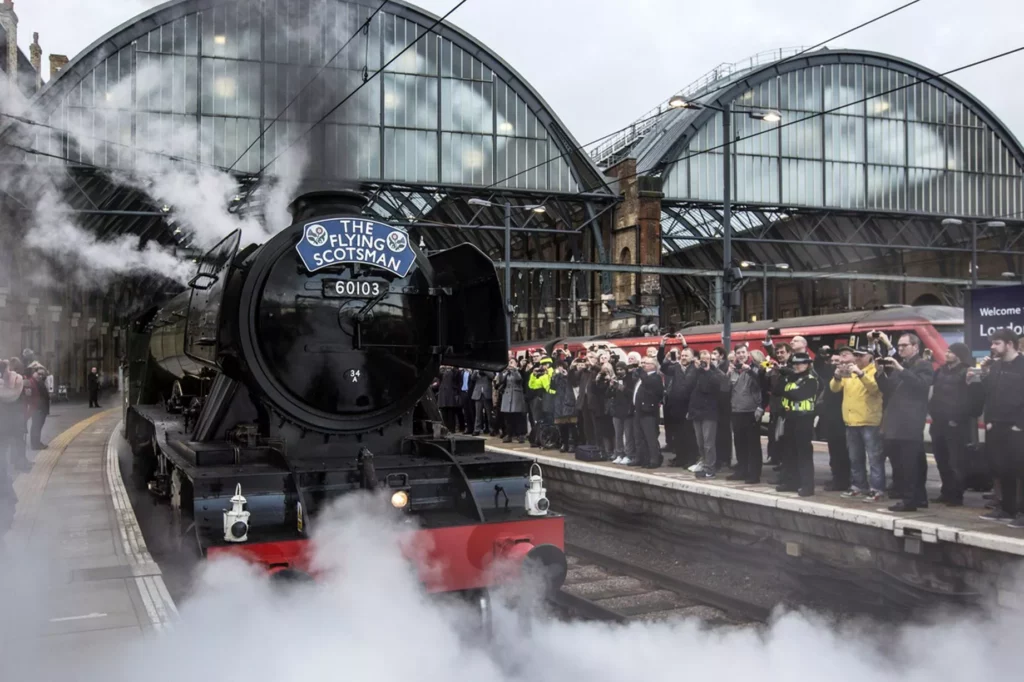KING's CROSS
WELCOME TO KING CROSS
King Cross railway station, known as London King’s Cross. Stands as a vital passenger railway terminus in the London Borough of Camden, on the periphery of Central London. It holds a significant position within the London station group, ranking among the busiest in the United Kingdom.
Historical Background:
The station’s inception in 1852 by the Great Northern Railway aimed to accommodate the East Coast Main Line’s northern edge. Originally serving this purpose, the station expanded rapidly. Meeting the demands of suburban lines and undergoing multiple 19th-century expansions.

In 1923, the London and North Eastern Railway took ownership as part of the Big Four grouping. This era saw the introduction of iconic services like the Flying Scotsman and notable locomotives, such as the Mallard.
1970s Redevelopment:
A comprehensive redevelopment in the 1970s streamlined the layout. Introduced electric suburban services, and established King Cross as a major terminus for the high-speed InterCity 125.
Today, the London North Eastern Railway operates long-distance trains to destinations like Edinburgh Waverley and Glasgow Central. Other operators, including Hull Trains and Grand Central. Contribute to the station’s significance. Great Northern manages suburban commuter trains in and around north London.
Bacarhire’s Involvement:

In addition to the railway operations, Bacarhire plays a crucial role in facilitating transportation needs. The presence of Bacarhire within the station premises enhances the overall travel experience, offering convenient and efficient car rental services to commuters.
In the late 20th century, the station’s vicinity gained notoriety. However, a significant turnaround began with a £500 million restoration plan announced by Network Rail in 2005. Subsequently approved by Camden London Borough Council in 2007, the plan involved restoring the original arched train shed roof and replacing the 1972 extension with an open-air plaza.
21st Century:
The New Departures Concourse:
The crowning achievement of this transformation was the opening of the new semi-circular departures concourse in March 2012. Designed by John McAslan and constructed by Vinci, this concourse, located to the west of the station, enhances passenger flows and integration between intercity, suburban, and underground sections.
Architectural Marvel:
Asserted by the architect as the longest single-span station structure in Europe. The semi-circular design features a radius of 59 yards (54 m) and over 2,000 triangular roof panels. Moreover, half of these panels are made of glass, providing a stunning view of the surroundings. Additionally, the intricate detailing of the structure showcases the architect’s meticulous planning and execution. Furthermore, the station’s innovative design not only emphasizes functionality but also incorporates aesthetic appeal, making it a truly unique addition to the architectural landscape.
Cultural Association:
This redevelopment also drew attention to the station’s association with the Harry Potter series, notably the fictional Platform 9¾. Beyond its transportation function, the station has transcended to become a cultural landmark. This transformation highlights the intersection of fiction and reality, as the iconic imagery from the literary world now intertwines with the physical space, adding an enchanting dimension to the station’s identity.
